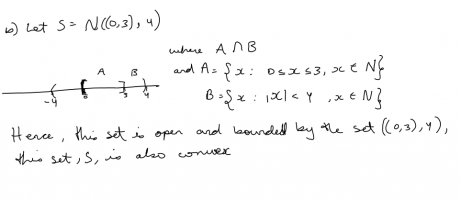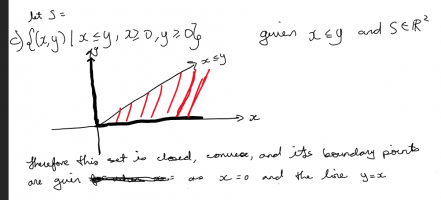I am trying to determine if these sets are open, closed or compact.
Part a. is very simple however my problem arises in part b, c, and d.
Any advice is appreciated, specifically on how to plot these sets, once I understand how they look plotted I can easily determine it's boundary points etc
Part a. is very simple however my problem arises in part b, c, and d.
Any advice is appreciated, specifically on how to plot these sets, once I understand how they look plotted I can easily determine it's boundary points etc





